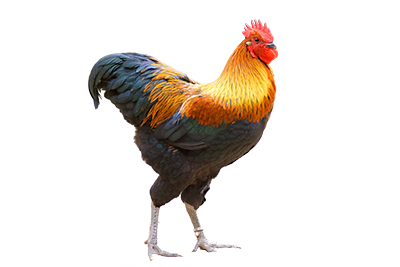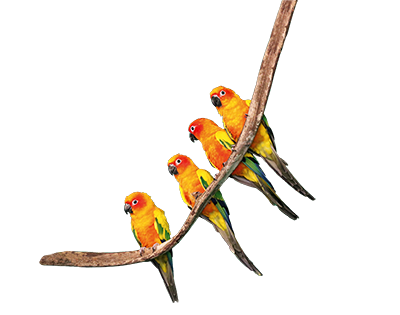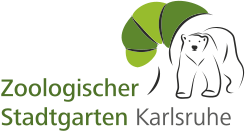Guided tours for school classes

Offer for schools
Log-in
Guided tours can be requested and booked by e-mail, fax or post. Currently, the lead time for registrations for guided tours is two to four weeks before the desired date, and sometimes four to six weeks in the summer months, due to the busy school class schedule.
Duration and prices
For school classes, the price for a 45-minute guided tour is 75 euros plus entrance fees. The topics for the guided tours are listed below.
When you arrive at the ticket office, please present the order and appointment confirmation.
Payment for the guided tour and the entrance fee can be made in cash or by card.
Supervisory responsibility
The zoo education staff cannot assume responsibility for the completeness of the group; the accompanying adults are responsible for supervision.
Registration
For appointment requests and bookings, please send us the registration form.

Themed tours for primary schools
Grade 1/2, Duration: 45 minutes The pupils learn about the sensory functions of different animals and compare them with their own sensory functions. The shape, position and size of the sensory organs are related to their function and to the animals’ habitat. Through the astonishing comparison with the senses of the zoo animals, the children become more aware of their own senses. Many illustrative materials are used for self-experience with all the senses.
Grade 1/2, Duration: 45 minutes The pupils learn what different zoo animal species eat in terms of food. They compare the food and tooth types of some representatives of the animal world. Life and nature become vivid and understandable by using animal tooth examples. Pupils have the opportunity to experience themselves and their teeth’s function as part of this nature.
Grade 1/2, Duration: 45 minutes To describe a selected habitat, such as rainforest, forest, savannah, etc., adaptations of different animal species to their environment are observed. The connections between characteristic way of life, physique and behaviour are explained. Knowledge and understanding of the interdependencies of animals, plants, humans and habitats should promote the pupils’ perception of sustainable use for this world.
Grade 3/4, Duration: 45 minutes Domestic animals have lived in the care of humans for centuries. They are kept for various reasons and are mostly farm animals. The pupils gain an insight into the worldwide diversity of domestic, pet and farm animals and learn about the primary needs of these species. Through this exposure, treating animals and their products with appreciation and respect is to be taught and promoted.
Grade 3/4, Duration: 45 minutes The pupils explore with us different ways of locomotion in zoo animals and observe body structure as well as specific functional units that are necessary for this (e.g., fins, wings, feet, etc.). Following this guided tour, teachers can visit the Children’s World of Gymnastics of the Zoological Gardens with their class. At various stations, children have the opportunity to integrate movements of selected animal species into their own exercises. Special free “travel booklets” from the Baden-Württemberg Gymnastics Foundation are available at the entrance desks to encourage children to participate and learn.
Grade 3/4, Duration: 45 minutes Together with our team, the pupils experience the changes in nature that lead to snow and ice and the demands this places on the animal world. They learn about the various adaptations that animals have to cope well in cold regions.

Topics for secondary schools
Grade 5/6, Duration: 45 minutes The pupils learn the basics revolving around the scientific observation of animals. This is often easier on zoo animals than on animal species in our natural environment. Zoo animals can almost always be seen, because observations are not interrupted by escape reactions. From the experiences and results, pupils learn to make simple conclusions based on behaviour, knowledge of the way of life and interaction of the animal species with the specific habitat. With this acquired knowledge, the curiosity to respectfully observe also animals of the native fauna is encouraged.
Grade 5/6, Duration: 45 minutes The pupils learn how the production and disposal of waste pollutes our environment. Whether seals, seagulls, monkeys or humans: they all feel the consequences of waste production. They learn about the already existing danger for animals and humans because of this situation. The participants learn easy measures that can be implemented by everyone for a sustainable use of recyclable materials and resources.
Grade 5/6, Duration: 45 minutes The pupils get a small insight into the diversity of fish. Colours, shapes and functional elements are amazingly versatile and fascinating in fish in the different habitats of the element water. With some examples, the participants are encouraged to remain interested and enthusiastic about this class of animals after this event.
**Titles with the addition ‘Exotenhaus’ can only be booked on weekdays at 10 am and 11 am.
Class 7/8, duration: 45 Minuten
Grade 5/6, Duration: 45 minutes What are mammals’ characteristics and what phenomena explain their enormous diversity? Pupils get to know mammals from the habitats of water, land and air, among others, and gain an insight into their specific adaptations. First basic knowledge of the biological order in the animal kingdom is imparted, which should stimulate interest and enthusiasm for this class of animals even after this event.
Grade 5/6, Duration: 45 minutes The pupils learn the differences between domestic and wild animals. The transitions to pets are clearly explained and their specific requirements for husbandry and responsibility are named. The relationships between natural habitats, basic needs of animal species, benefits for and by humans as well as keeping conditions that are fair to all are discussed in detail.
Class 5/6, Duration: 45 minutes Characteristics of amphibians and reptiles are contrasted in their differences and worked out in detail with the pupils. Both classes of vertebrates have fascinating adaptations that determine their way of life. However, a variety of different factors is often causing extreme endangerment to their habitats. Pupils learn about the causes of these changes and about possibilities for conservation measures that they too can actively implement or support.
**Titles with the addition ‘Exotenhaus’ can only be booked on weekdays at 10 am and 11 am.
Class 7/8, duration: 45 min.
Class 7/8, Duration: 45 minutes Using the example of the ecosystem “African savannah”, interrelations between living organisms (biotic) and environmental factors (abiotic) are worked out in detail with the pupils. The Karlsruhe Zoological Garden offers suitable animal species that represent social communities, but also those that compete for resources and have developed various tactics for individual survival.
Class 7/8, duration: 45 min.
Grade 9/10/Course level, Duration: 45 minutes Many animal species, which are vividly represented as living objects in the Karlsruhe Zoological Garden, can be used to explain phenomena of evolution such as analogy and homology, abiotic or biotic selection factors as well as ways of the emergence of new species, e.g., through isolation or allopatric speciation, and much more in an understandable and comprehensible way.
Class 9/10, duration: 45 min
Class 9/10, Duration: 45 minutes
Class 9/10, duration: 45 min.




